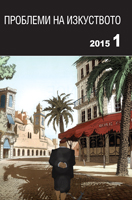Астерикс в България. Социокултурни щрихи
Astérix in Bulgaria. Socio-cultural outlines
Author(s): Anton StaykovSubject(s): Social Sciences, Fine Arts / Performing Arts, Visual Arts, Culture and social structure
Published by: Институт за изследване на изкуствата, Българска академия на науките
Summary/Abstract: The development of comics in Bulgaria in the period of transition rests on the tradition established by the Duga and Chuden Sviat magazines for children, which have attracted large audiences in the 1980s. The chaotic emergence of magazines and films from the West replaced the closed system of cultural values of the Socialist era. In the early 1990s, the domestic publishing market saw literary production of translated comics, of which the children’s comics of Disney Studio, such as Mickey Mouse and Donald Duck and the teen series Witch enjoyed the greatest popularity. The endeavour to translate and distribute the series of Hergé’s comic-book hero Tintin failed. Batman and Super- man attracted audiences in their own right, but these were a far cry from a real superheroes boom in this country. The Astérix series by scriptwriter René Goscinny and cartoonist albert uderzo was better positioned. Though not racking up dream sales in such countries as Poland and Germany, the series was republished on a regular basis over the 1990s. The sign system of these comic books did not lose its readability due to the system of codes skilfully inbuilt by René Goscinny. Venelin Proykov’s good translation successfully rendered the realia of the French authors in a Bulgarian lexical and social environment. The latter are universally readable but with elements of an intellectual play, where attentive readers would find a plenitude of signs and a number of references to various issues facing contemporary societies.
Journal: Проблеми на изкуството
- Issue Year: 2015
- Issue No: 1
- Page Range: 16-21
- Page Count: 6
- Language: Bulgarian
- Content File-PDF

